


The Art Of Shaping Clay On A Potter's Wheel
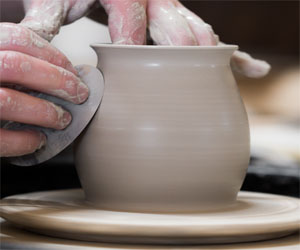
Wheel-throwing, often simply called "throwing," is a ceramic technique that has captured the imaginations of artists and enthusiasts for centuries. This process involves shaping clay on a potter's wheel, and it has been instrumental in the creation of functional and artistic pottery. Let's explore the history, techniques, and enduring appeal of wheel-throwing in the world of ceramics.
A Glimpse Into History: Wheel-throwing has an ancient history, with its origins dating back to around 4000 BCE in regions such as Mesopotamia and China. These early potters used simple, hand-driven wheels to craft their vessels. The technology evolved over time, leading to the development of foot-powered and, eventually, electric pottery wheels, which are widely used today.
The Process: The wheel-throwing process begins with a lump of clay centered on the wheel head. Proper centering is a crucial skill that requires careful hand and foot coordination to achieve balance and symmetry. Once centered, the potter uses their hands to shape the clay, pulling it upward and outward, manipulating the form as it spins on the wheel. The wheel's rotation allows for the creation of consistent and precise shapes.
Technique And Skill: Wheel-throwing is a craft that demands patience and skill. Potters must control the speed and pressure applied to the clay to achieve the desired form. Various tools, such as ribs and wooden or metal shaping tools, are used to refine the shape, create textures, and add decorative elements. The level of precision required in wheel-throwing makes it both an art and a science, where mastery comes through experience and practice.
Functional And Artistic Pottery: One of the most remarkable aspects of wheel-throwing is its versatility. Potters can create a wide range of functional items, including cups, bowls, plates, and vases. The uniformity and precision offered by wheel-throwing make it well-suited for producing pottery used in daily life. At the same time, many artists utilize the wheel-throwing technique to create decorative and sculptural pieces, pushing the boundaries of what can be achieved with clay.
Enduring Appeal: The enduring appeal of wheel-throwing lies in its combination of tradition and innovation. While the fundamentals of this technique have remained largely unchanged for millennia, contemporary potters continue to experiment with new forms, textures, and glazes. The timeless nature of wheel-throwing makes it accessible to both beginners and experienced potters, offering endless opportunities for exploration and self-expression.
Wheel-Throwing Studios And Communities: Many communities around the world have wheel-throwing studios where aspiring potters can learn and practice this art form. These studios provide not only the necessary equipment but also a supportive community of fellow enthusiasts. The exchange of knowledge, ideas, and inspiration within these communities contributes to the growth and evolution of wheel-throwing.
Wheel-throwing is a cornerstone of ceramic art that continues to thrive and inspire. Its rich history, technical challenges, and capacity for both functional and artistic expression make it a beloved practice for individuals of all skill levels. Whether in the hands of a master potter or a novice, the potter's wheel remains a vehicle for turning a lump of clay into a vessel of artistry and craftsmanship, connecting us to the timeless traditions of pottery.
The Healing Power Of Creativity
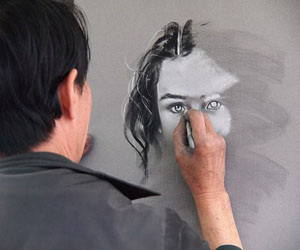 The Benefits Of Therapeutic Crafts
The Benefits Of Therapeutic Crafts
Stress Reduction: The act of creating something with your hands can be meditative in itself. Whether you're knitting, painting, or sculpting, the rhythmic and repetitive motions can help lower stress levels, ease tension, and promote relaxation.
Self-Expression: Therapeutic crafts offer a non-verbal means of self-expression. You can convey your emotions, thoughts, and feelings through your creative work, allowing for a deeper connection with yourself.
Sense Of Accomplishment: Completing a craft project, no matter how simple, can provide a sense of achievement and boost self-esteem. This can be particularly meaningful for those struggling with self-doubt or anxiety.
Social Connection: Many therapeutic crafts can also be social activities. Joining a knitting club, taking a pottery class, or participating in a painting workshop provides opportunities for social interaction and the building of supportive communities.
Emotional Release: Engaging in crafts can serve as a healthy outlet for pent-up emotions. The act of creating can be emotionally cathartic, allowing individuals to release and process feelings in a constructive manner.
Improved Concentration: Craft projects often require attention to detail, which can help improve focus and concentration. This can be especially beneficial for individuals with racing thoughts or attention-related challenges.
Crafting Your Way To Creativity And Fulfillment
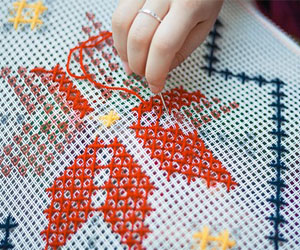 Skill Development: Handmade projects offer the opportunity to learn and develop new skills. Whether you're perfecting your knitting techniques, honing your woodworking abilities, or expanding your artistic talents, each project is a chance for growth and self-improvement.
Skill Development: Handmade projects offer the opportunity to learn and develop new skills. Whether you're perfecting your knitting techniques, honing your woodworking abilities, or expanding your artistic talents, each project is a chance for growth and self-improvement.
Sustainability: In an age of mass production and consumerism, handmade projects can be a sustainable choice. Crafting your own items reduces the need for disposable products and promotes a culture of reuse and sustainability.
Connection: Handmade projects often bring people together. Joining crafting communities, attending workshops, or collaborating on projects with friends or family can foster a sense of connection and shared creativity.
To get started with your own handmade projects, consider the following:
Choose Your Craft: Select a craft that interests you the most. Whether it's sewing, pottery, knitting, or any other craft, your passion will drive your creativity.
Gather Materials: Acquire the necessary materials and tools. Invest in quality materials to ensure a successful and rewarding crafting experience.
Start Simple: Begin with straightforward projects to build your confidence and skills. As you gain experience, you can take on more complex and intricate creations.
From Vine To Glass
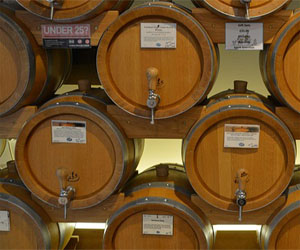 Harvesting: The timing of the grape harvest is a critical decision. Harvesting too early or too late can significantly impact the final product. In traditional wine production, grapes were often handpicked, allowing for the careful selection of ripe, healthy clusters. However, modern mechanical harvesters have also become popular for their efficiency.
Harvesting: The timing of the grape harvest is a critical decision. Harvesting too early or too late can significantly impact the final product. In traditional wine production, grapes were often handpicked, allowing for the careful selection of ripe, healthy clusters. However, modern mechanical harvesters have also become popular for their efficiency.
Crushing And Pressing: Once the grapes are harvested, they undergo a process known as crushing, where they are gently broken to release the juice. Depending on the type of wine being produced, the grapes may be destemmed, meaning the stems are removed, or they may be pressed directly. The juice obtained from this process is known as "must."
Fermentation: Fermentation is a crucial stage in wine production, as it's where the grape juice transforms into wine. Yeasts are introduced to the must to convert the sugars into alcohol. The choice of yeast and fermentation method can significantly influence the wine's flavor profile.
Aging: Aging is a key factor in wine production, especially for red wines and some white wines. Oak barrels, often used for aging, can impart flavors and aromas to the wine, adding complexity and depth. The length of aging, as well as the type of barrel used, varies based on the style of wine desired.

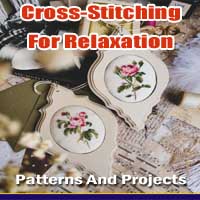




Turning Old Into Gold
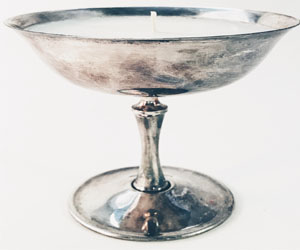 2. Gather Inspiration
2. Gather Inspiration
Before diving into a project, seek inspiration from online platforms, books, or upcycling communities. Ideas are everywhere, and seeing what others have created can fuel your creativity and help you come up with unique, sustainable designs.
3. Choose Quality Over Quantity
When selecting items for upcycling, opt for quality over quantity. Well-made, durable pieces will last longer and provide better raw materials for your projects. This approach ensures your upcycled creations have a longer life as well.
4. Declutter Responsibly
Before tossing old items, consider whether they can be upcycled. Decluttering responsibly by finding new uses for items you no longer need reduces your environmental impact and keeps useful materials out of landfills.
5. DIY Tools And Supplies
Invest in a set of basic DIY tools, like a good-quality glue gun, a sewing machine, and paintbrushes. Having the right tools will make your upcycling projects easier and more enjoyable.
6. Repaint And Refinish
A fresh coat of paint or varnish can breathe new life into many items. Consider repainting furniture or refinishing wooden surfaces to give them a modern, updated look.
7. Mix And Match Materials
Combine different materials to create unique, eclectic pieces. Mixing metals, wood, and fabric, for example, can result in stunning and one-of-a-kind upcycled creations.
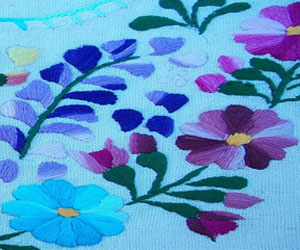 The World Of Textile Art: Beyond the realm of fashion, textile art is a profound expression of fabric creativity. Artists use various techniques like embroidery, quilting, and weaving to craft stunning pieces that blend traditional and contemporary elements. Each piece tells a story, often reflecting the artist's emotions, experiences, and cultural influences.
The World Of Textile Art: Beyond the realm of fashion, textile art is a profound expression of fabric creativity. Artists use various techniques like embroidery, quilting, and weaving to craft stunning pieces that blend traditional and contemporary elements. Each piece tells a story, often reflecting the artist's emotions, experiences, and cultural influences.
Fabric Creativity In Home Decor: Home decor is another arena where fabric creativity shines. Whether it's hand-stitched cushions, beautifully quilted throws, or intricate wall hangings, textiles have the power to transform a living space. Fabric creativity allows individuals to customize their homes, infusing them with personal style and warmth.
Eco-Friendly Fabric Creativity: In recent years, fabric creativity has also embraced eco-friendliness. Artists and designers are increasingly using sustainable and upcycled materials to create unique pieces. This eco-conscious approach not only reduces environmental impact but also adds depth to the narrative behind each creation.
The Intersection Of Technology And Fabric Creativity: Modern fabric creativity is not limited to traditional techniques. Technology has entered the arena, with 3D printing, digital textile design, and even smart fabrics becoming part of the creative palette. These innovations allow artists to experiment with entirely new forms, structures, and functions.
Avenues For Personal Expression: For many, fabric creativity serves as a therapeutic outlet, a way to destress and find joy in the act of creation. Whether you're an experienced seamstress, a novice embroiderer, or someone experimenting with fabric for the first time, it offers a platform for self-expression and a tangible outcome of your imagination.
A Tranquil Journey To Inner Peace
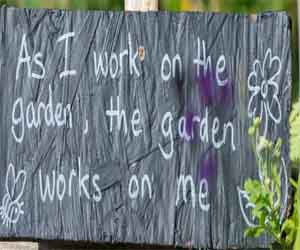 The Essence Of Herb Garden Meditation
The Essence Of Herb Garden Meditation
Meditation is a practice that has been revered for centuries for its ability to calm the mind, reduce anxiety, and promote emotional balance. When combined with the natural beauty and fragrance of an herb garden, meditation takes on a whole new dimension. Herb garden meditation involves spending time amidst your herbal haven, embracing the serenity, and harnessing the therapeutic benefits of herbs.
Preparing Your Herb Garden
Before embarking on a journey of herb garden meditation, it's essential to create an inviting space. Your herb garden should be well-maintained, with vibrant herbs and a comfortable spot for sitting or lying down. A soft blanket, a cushion, or a garden bench can be an ideal choice to enhance your comfort. Ensure that your chosen spot is free from distractions and noise, so you can fully immerse yourself in the meditation experience.
The Meditation Process
Begin your herb garden meditation by finding a comfortable seated or lying position. Close your eyes and take a few deep, calming breaths. Feel the earth beneath you and the gentle rustle of the herb leaves. Let your senses absorb the natural aromas, the warmth of the sun, and the soft caress of the breeze.
As you breathe in, focus on the scents around you. The invigorating aroma of basil, the calming fragrance of lavender, or the zesty scent of mint can all inspire different aspects of your meditation. You can choose herbs based on their individual healing properties or simply let your intuition guide you.